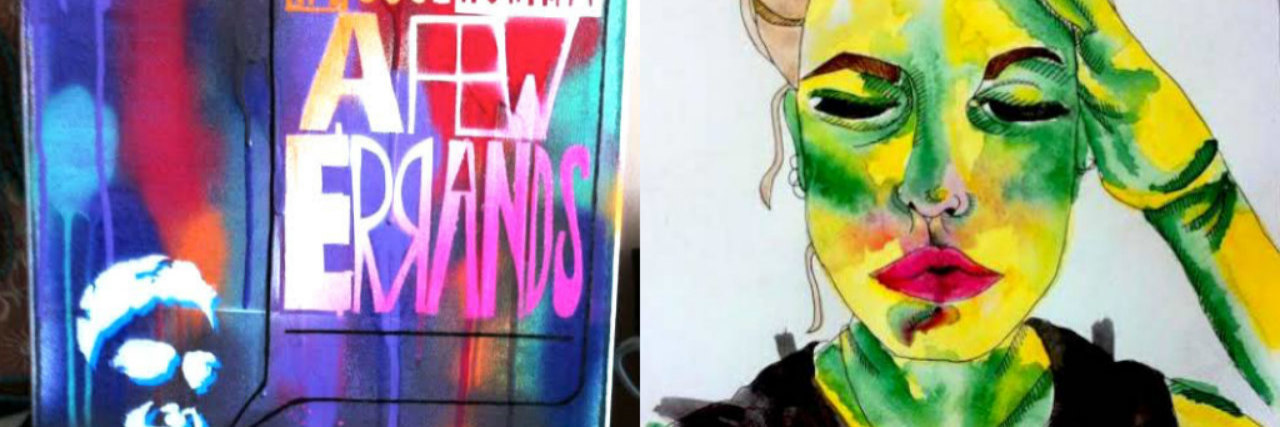18 Pictures That Show What the 9 Classic Symptoms of Borderline Personality Disorder 'Look' Like
Borderline personality disorder (BPD) is a mental illness characterized largely by the inability to regulate emotions, which can cause a person with BPD to have painful and unstable interpersonal relationships. In the Diagnostic and Statistical Manual (DSM), BPD is associated with nine “classic” symptoms, which you can read more about here.
Though the DSM lays out each symptom in a clear and diagnostic way, it gives virtually no insight into how these symptoms play out in real life. We wanted to know what it’s really like to live with the nine classic symptoms of BPD, so we reached out to artist and Mighty community member Charmaine Selwood, who lives with BPD, to show us what these symptoms really “look” like in her life. Charmaine made visual depictions of the nine “hallmark” symptoms of BPD, and shared her commentary on what each piece of art means to her. See her artwork and read her responses below — if you live with BPD, you might be able to relate. To view more of Charmaine’s work, check out her website here.
1. Fear of Abandonment
An intense fear of abandonment, even going to extreme measures to avoid real or imagined separation or rejection. (via Mayo Clinic)
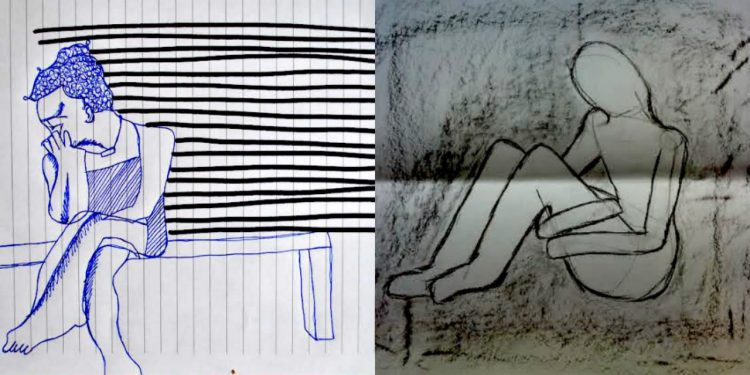
“With a vacant mother growing up, my fear of abandonment usually always came from my deep need to be held by my mum, and trying to find a romantic partner to care for me like I needed her to. When partners couldn’t fulfill what I needed, it felt like I was being let down, yet again. Forgotten about. Abandoned.” — Charmaine Selwood
2. Stormy or Unstable Relationships
Unstable personal relationships that alternate between idealization— “I’m so in love!”— and devaluation — “I hate her.” This is also sometimes known as “splitting.” (via National Alliance on Mental Illness)
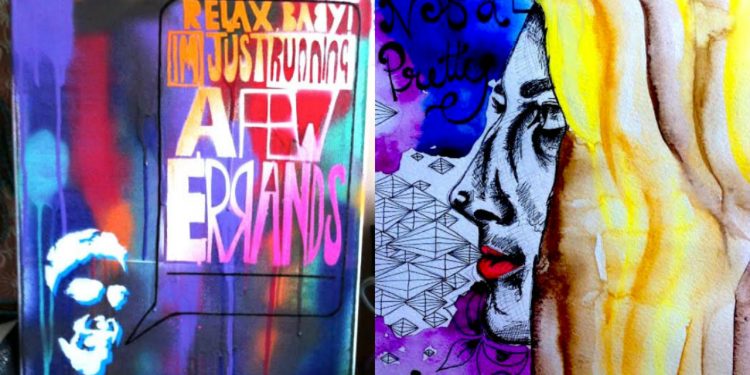
“I fall in love in less than 24 hours, and I devote myself and my whole world to that person. But before I know it, this person who would ‘never hurt me,’ actually hurts me. After someone hurts me, intentionally or unintentionally, that’s it. They are the worst person ever! I cut them out for good. There is no middle ground. You are good, or you are bad. I am in love with you, or I hate you.” — Charmaine Selwood
3. Unstable Self-Image
Distorted and unstable self-image, which affects moods, values, opinions, goals and relationships. (via National Alliance on Mental Illness)
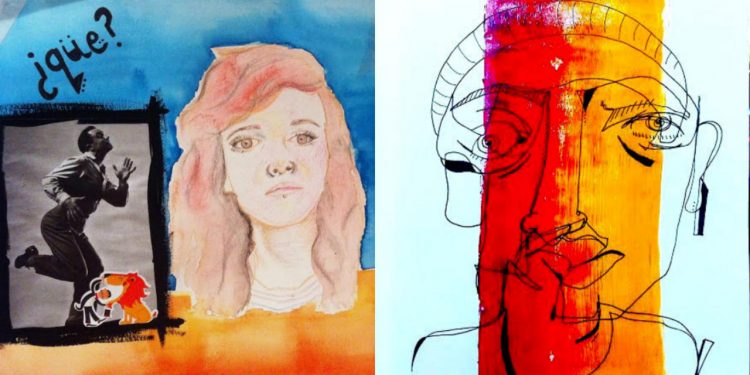
“With unstable self-image or identity disturbance, before knowing your true self, you mimic those around you. Just until you figure out who the hell you actually are. My artwork around this symptom is always pretty abstract. The image is so distorted, so unusual, so unknown. I am beginning to learn and understand my true identity, and since then, my artwork actually starts to look more and more like me, instead of abstract figures and faces.” — Charmaine Selwood
4. Impulsivity
Impulsive and risky behavior, such as gambling, reckless driving, unsafe sex, spending sprees, binge eating or drug abuse, or sabotaging success by suddenly quitting a good job or ending a positive relationship. (via Mayo Clinic)
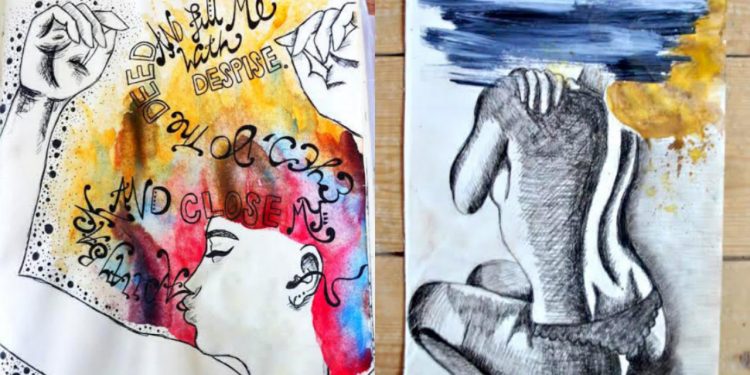
“I was having very intense emotions — deep, dark, bad ones — and in an attempt to make it all stop, I would go out with a stranger, take drugs and have sex. It was a temporary distraction… yet, it only added to the mess. These behaviors always ended up in more deep regret and shame, with no real solution to any problem whatsoever.” — Charmaine Selwood
5. Suicidal Behavior or Self-Harm
Suicidal threats or behavior or self-injury, often in response to fear of separation or rejection. (via Mayo Clinic)
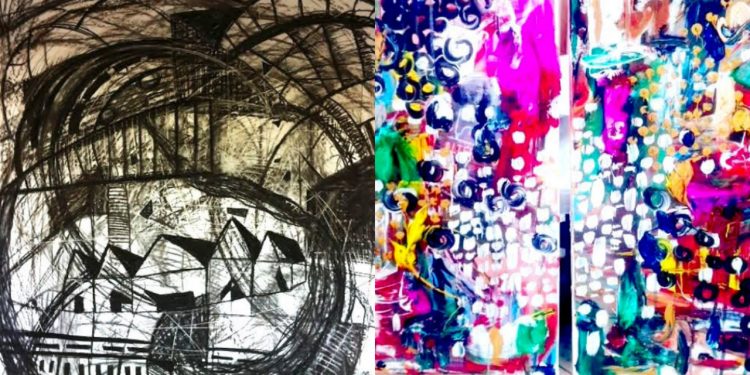
“In the past eight months of therapy, I learned to take to my brush when I felt like self-harming, or if I felt like ending it all. It’s a real grit your teeth kind of moment, because the last thing I want to do when I feel this way is paint. Eventually, the rapid, rough marks I wanted to make on myself, I would make on the canvas, with hard splashes of paint, waving movements of the brush while focusing on the colorful, releasing marks I was making. And in the end, I got to look at a piece of artwork filled with emotion, instead of open wounds on my skin.” — Charmaine Selwood
6. Periods of Emotional Intensity
Wide mood swings lasting from a few hours to a few days, which can include intense happiness, irritability, shame or anxiety. (via Mayo Clinic)
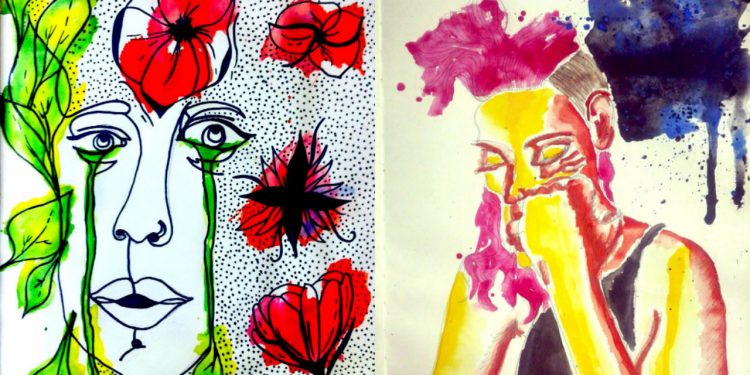
“It wasn’t until last year that I noticed the extreme swings of my moods. ‘I must be bipolar!’ I thought. Extremely happy, buzzing, bouncing of the walls, planning my future, writing songs and poems, drawing and painting just to come rapidly crashing down to an ultimate low minutes later. The depression swallows me up. The happy highs are never that bad, I actually have learnt to enjoy them and make the most of it. But the lows, the depression, the anxiety and the sadness are unbearable at times. Every day was and still is just one hell of a roller coaster.” — Charmaine Selwood
7. Chronic Emptiness
Chronic feelings of boredom or emptiness. (via National Alliance on Mental Illness)
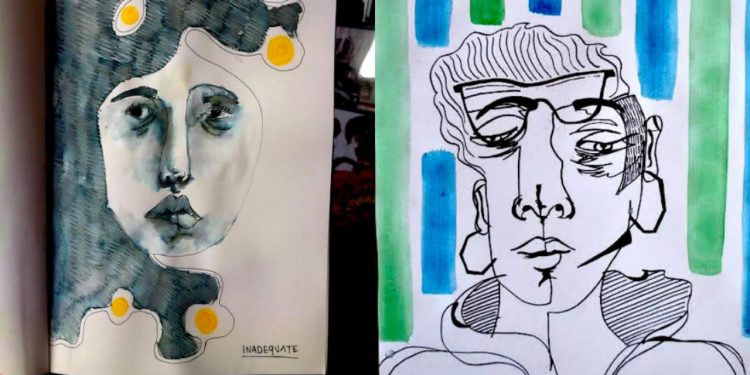
“There are hardly any illustrations — let alone words — to describe accurately how chronic emptiness actually feels. Emptiness for me always leads back to dissociation. It’s like my mind and body feel like it’s better to switch totally off. Emptiness just looks like me lying on my bed. For hours and hours without moving a muscle. Without eating, drinking, picking up the phone — nothing.” — Charmaine Selwood
8. Uncontrollable Anger
Inappropriate, intense or uncontrollable anger — often followed by shame and guilt. (via National Alliance on Mental Illness)

“When it comes to anger, my anger bursts are short-lived and I don’t usually create any art in that moment. My short anger bursts quickly travel to either self-hate, or feeling very overwhelmed with the intense emotions, leading to dissociating. Anger is a very difficult emotion for me, and so often self-harm, or disappearing into my dissociative world, helped me escape the emotion.” — Charmaine Selwood
9. Dissociation
Dissociative feelings — disconnecting from your thoughts or sense of identity, or “out of body” type of feelings — and stress-related paranoid thoughts. Severe cases of stress can also lead to brief psychotic episodes. (via National Alliance on Mental Illness)
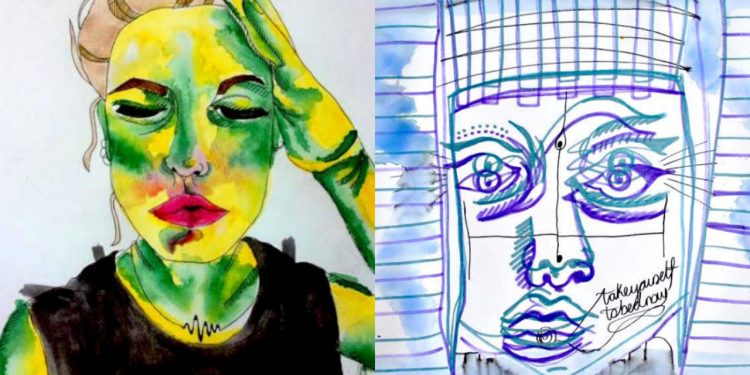
“Dissociation has many different looks for me, as it’s hard to really illustrate what dissociation feels like. Ultimately this is what a lot of my overwhelming emotions and feelings come down to: just switching off. Switching off so much to the point where you question if you are even real. Dissociation looks a lot like you’re having a terrible headache from the outside, but even I can’t begin to illustrate how it looks on the inside.” — Charmaine Selwood
If you want to know more about the nine classic symptoms of borderline personality disorder, check out the pieces below:
Images via Charmaine Selwood

